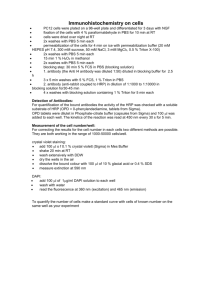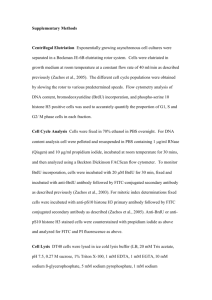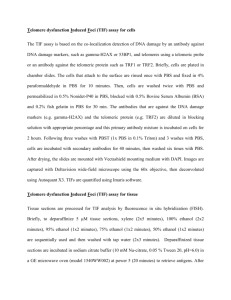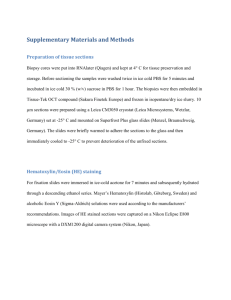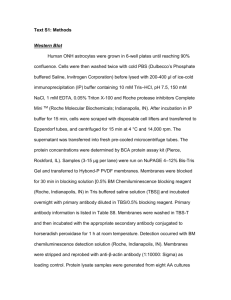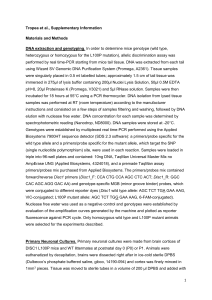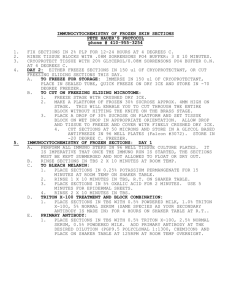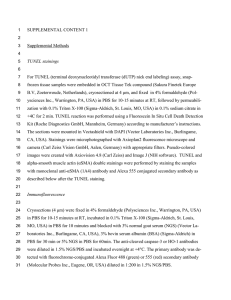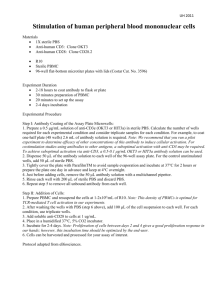Supplementary Data
advertisement
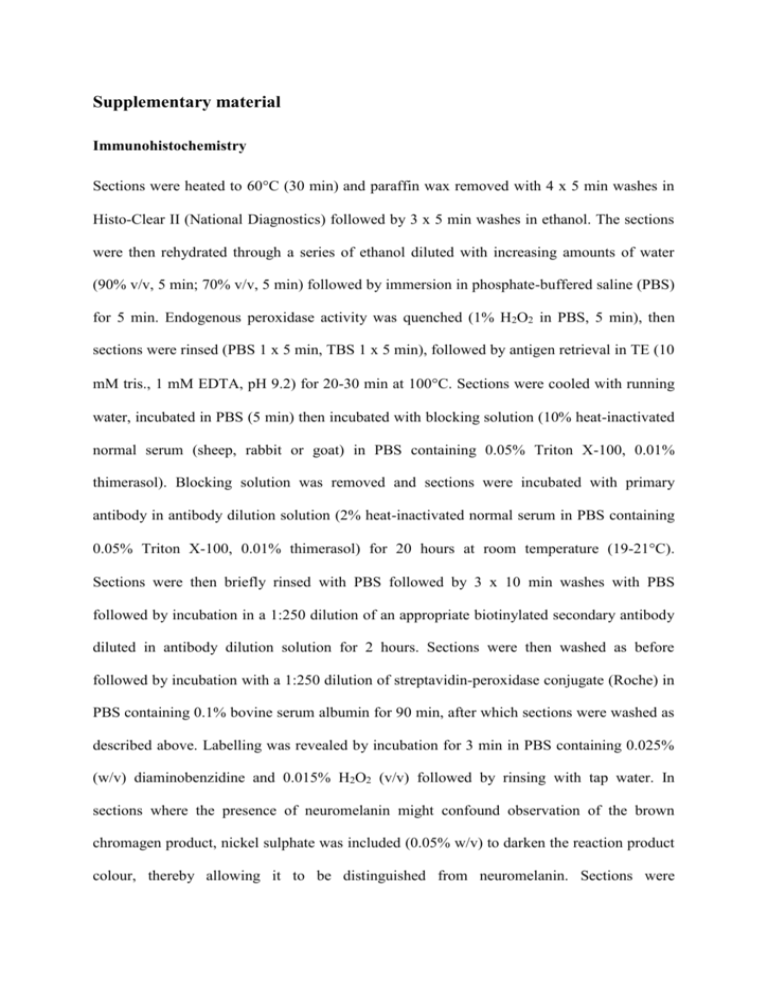
Supplementary material Immunohistochemistry Sections were heated to 60C (30 min) and paraffin wax removed with 4 x 5 min washes in Histo-Clear II (National Diagnostics) followed by 3 x 5 min washes in ethanol. The sections were then rehydrated through a series of ethanol diluted with increasing amounts of water (90% v/v, 5 min; 70% v/v, 5 min) followed by immersion in phosphate-buffered saline (PBS) for 5 min. Endogenous peroxidase activity was quenched (1% H2O2 in PBS, 5 min), then sections were rinsed (PBS 1 x 5 min, TBS 1 x 5 min), followed by antigen retrieval in TE (10 mM tris., 1 mM EDTA, pH 9.2) for 20-30 min at 100C. Sections were cooled with running water, incubated in PBS (5 min) then incubated with blocking solution (10% heat-inactivated normal serum (sheep, rabbit or goat) in PBS containing 0.05% Triton X-100, 0.01% thimerasol). Blocking solution was removed and sections were incubated with primary antibody in antibody dilution solution (2% heat-inactivated normal serum in PBS containing 0.05% Triton X-100, 0.01% thimerasol) for 20 hours at room temperature (19-21C). Sections were then briefly rinsed with PBS followed by 3 x 10 min washes with PBS followed by incubation in a 1:250 dilution of an appropriate biotinylated secondary antibody diluted in antibody dilution solution for 2 hours. Sections were then washed as before followed by incubation with a 1:250 dilution of streptavidin-peroxidase conjugate (Roche) in PBS containing 0.1% bovine serum albumin for 90 min, after which sections were washed as described above. Labelling was revealed by incubation for 3 min in PBS containing 0.025% (w/v) diaminobenzidine and 0.015% H2O2 (v/v) followed by rinsing with tap water. In sections where the presence of neuromelanin might confound observation of the brown chromagen product, nickel sulphate was included (0.05% w/v) to darken the reaction product colour, thereby allowing it to be distinguished from neuromelanin. Sections were counterstained with Mayer’s haematoxylin (TCS Biosciences Ltd.) to reveal cell nuclei and then dehydrated with increasing concentrations of ethanol, cleared with Histo-Clear II (4 x 5 min) and cover-slipped with Omnimount (National Diagnostics). For immunofluorescence, sections were processed as described above, then incubated with single or combinations of primary antibody. After removal of the primary antibody sections were incubated with a 1:1000 dilution of goat anti-rabbit Alexa Fluor® 546 or/and goat antimouse Alexa Fluor® 488 (Invitrogen) for 90 min in tris-buffered saline pH 7.2 (TBS) followed by 4 x 10 min washes in TBS. To stain all cell nuclei, sections were then incubated in 4 g/ml DAPI (4’,6-Diamidino-2-phenylindole dihydrochloride) in TBS for 5 min followed by 3 x 10 min washes in TBS. Auto-fluorescence (predominantly lipofuscin) was then quenched with sudan black B (0.3% w/v in 70% ethanol, 10 min), followed by 4 x 10 min washes in TBS. Since sudan black B reacts with DAPI to produce a film that occluded the tissue, the sections were then dehydrated, cleared with Histo-Clear II and mounted with Omnimount (National diagnostics). While masking most autofluorescence, this had the effect of reducing the brightness of fluorescent images. No labelling of cells was observed when the primary antibody was omitted.

